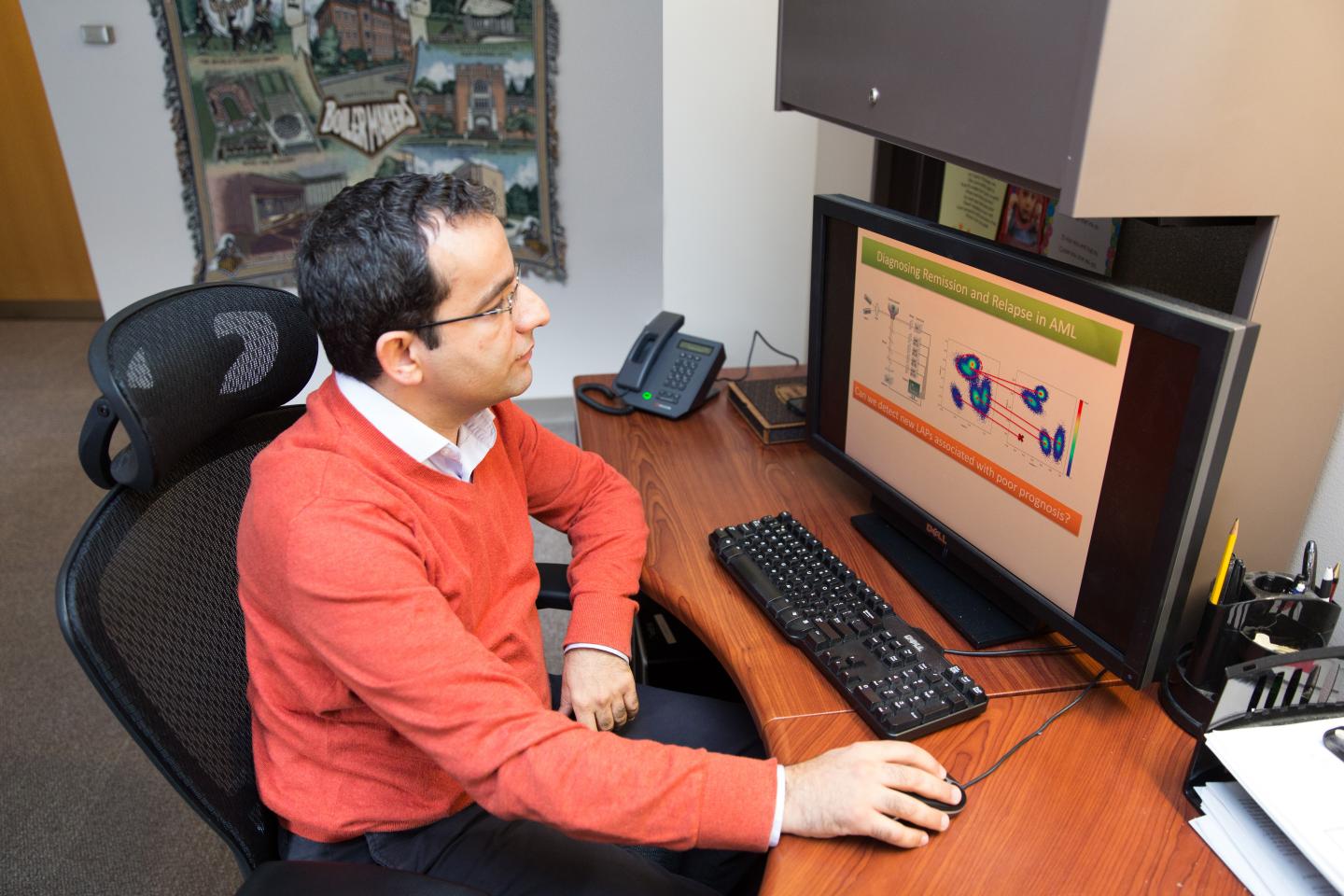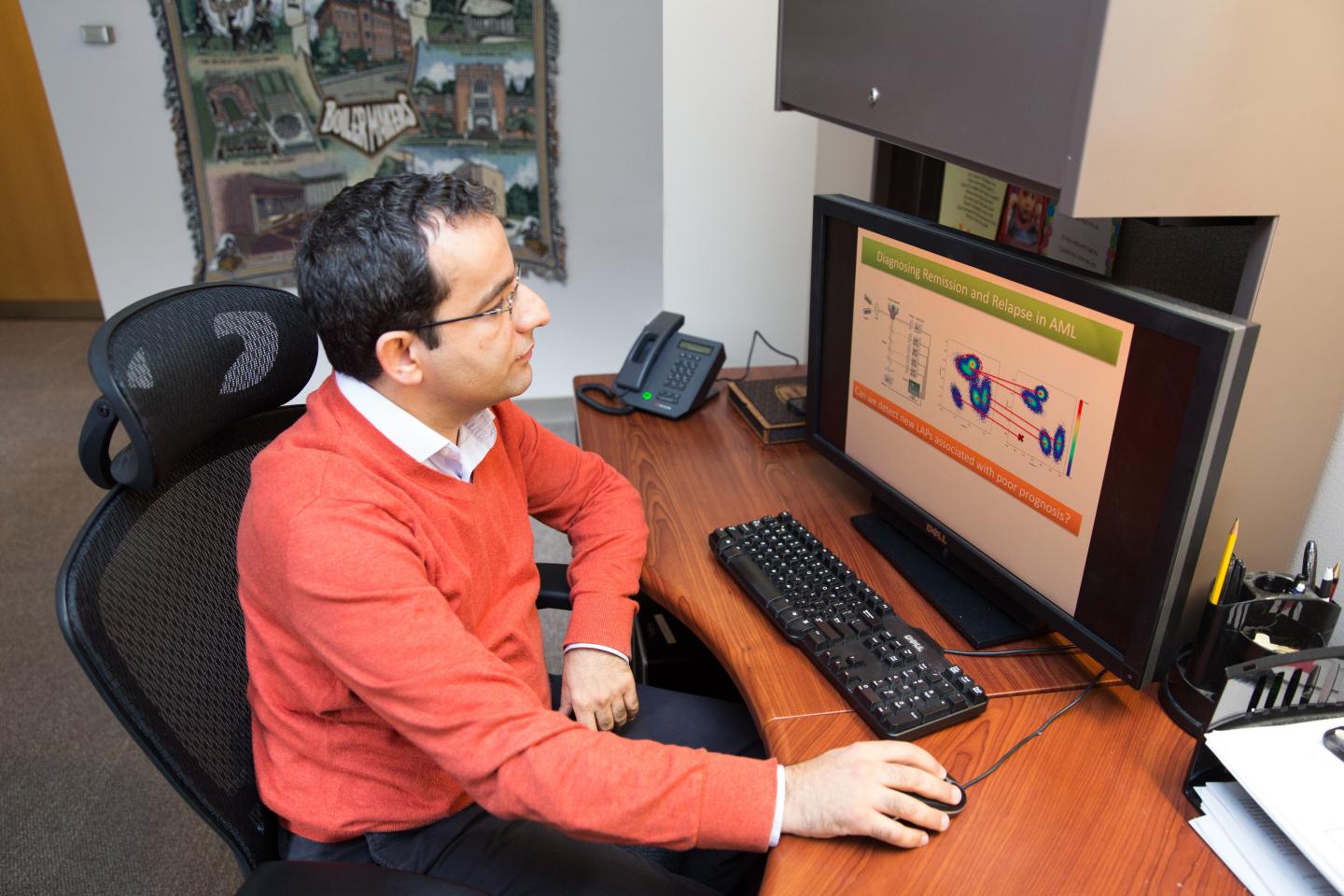
Credit: School of Science at Indiana University-Purdue University Indianapolis
INDIANAPOLIS — Researchers have developed the first computer machine-learning model to accurately predict which patients diagnosed with acute myelogenous leukemia, or AML, will go into remission following treatment for their disease and which will relapse.
"It's pretty straightforward to teach a computer to recognize AML, once you develop a robust algorithm, and in previous work we did it with almost 100 percent accuracy," said Murat Dundar, senior author of the disease-progression study and associate professor of computer science in the School of Science at Indiana University-Purdue University Indianapolis. "What was challenging was to go beyond that work and teach the computer to accurately predict the direction of change in disease progression in AML patients, interpreting new data to predict the unknown: which new AML patients will go into remission and which will relapse."
The computer was trained using bone marrow data and medical histories of AML patients, as well as blood data from healthy individuals. Cases about which the computer had no information were evaluated by the algorithm by applying knowledge about similar cases in the database. The computer was then able to predict remission with 100 percent accuracy. Relapse was correctly predicted in 90 percent of relevant cases.
"As the input, our computational system employs data from flow cytometry, a widely utilized technology that can rapidly provide detailed characteristics of single cells in samples such as blood or bone marrow," explained Bartek Rajwa, first author of the study and research assistant professor of computational biology in the Bindley Bioscience Center at Purdue University. "Traditionally, the results of flow cytometry analyses are evaluated by highly trained human experts rather than by machine-learning algorithms. But computers are often better at extracting knowledge from complex data than humans are."
Automated measurement and monitoring of response to treatment of AML are critical not only for objective evaluation of disease-status prognosis but also for timely assessment of treatment strategies, the study's authors noted. Their work creates and underlies a clinical decision support system that recognizes the presence of minute residual amounts of malignant cells of any AML type in bone marrow samples, enabling early identification of change in direction of disease progression.
"Machine learning is not about modeling data. It's about extracting knowledge from the data you have so you can build a powerful, intuitive tool that can make predictions about future data that the computer has not previously seen — the machine is learning, not memorizing — and that's what we did," said Dundar, an internationally respected machine-learning scientist who specializes in teaching computers to understand biomedical data.
The National Cancer Institute anticipated that 19,950 individuals would be diagnosed with AML in 2016 and forecast that approximately 10,430 deaths from AML would occur last year.
###
The study was a collaboration of IUPUI's Dundar and Purdue's Rajwa with Roswell Park Cancer Institute's Paul K. Wallace, a flow cytometry expert, and Elizabeth A. Griffiths, a physician who treats patients with AML.
This research, which has potential application to other hematological neoplasms in addition to AML, was supported by National Science Foundation grant IIS-1252648 (CAREER), by National Institute of Biomedical Imaging and Bioengineering grant 5R21EB015707 and in part by National Cancer Institute grant 5P30 CA01605. The content is solely the responsibility of the authors and does not necessarily represent the official views of NSF and NIH.
"Automated Assessment of Disease Progression in Acute Myeloid Leukemia by Probabilistic Analysis of Flow Cytometry Data" is published online ahead of print in IEEE Transactions on Biomedical Engineering.
Media Contact
Cindy Fox Aisen
[email protected]
317-843-2275
http://science.iupui.edu/
############
Story Source: Materials provided by Scienmag





